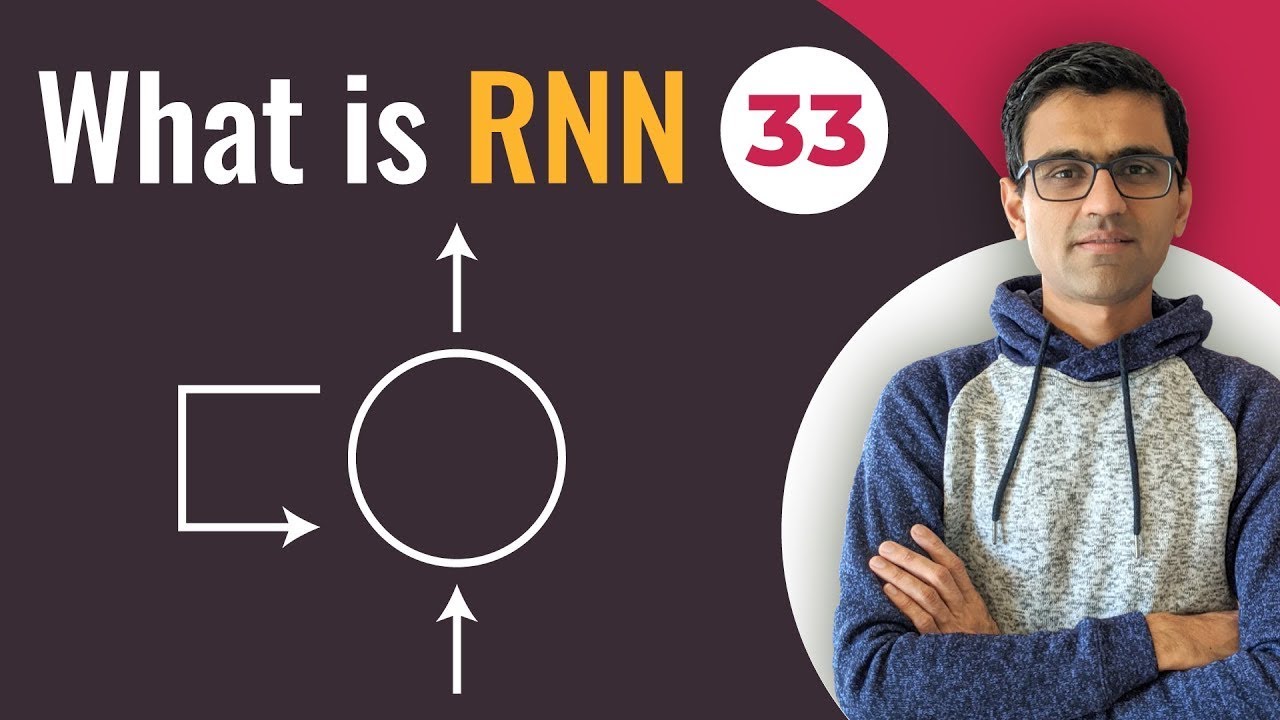Pengenalan RNN (Recurrent Neural Network)
Summary
TLDRRecurrent Neural Networks (RNNs) are ideal for sequential data like audio, video, signals, and sentences, where the length of input data can vary. RNNs use a hidden state at each time step to process inputs sequentially, with each output influenced by previous inputs. This process involves weights and biases applied to the current input and the previous hidden state, creating a form of memory. RNNs come in various types such as many-to-many, many-to-one, and one-to-many, each suited for different tasks. Understanding the hidden state mechanism is crucial for working with RNNs in diverse applications.
Takeaways
- 😀 RNNs are used for sequential data where the order matters, such as audio, video, and text.
- 😀 RNNs can handle varying lengths of input data, like sentences with different numbers of words.
- 😀 The key feature of RNNs is that they process data over time steps, where each step involves both current and past information.
- 😀 At each time step, the input is combined with the previous hidden state using weights to compute the new hidden state.
- 😀 The output for each time step is calculated using the current hidden state and additional weights, plus a bias and activation function.
- 😀 RNNs are called 'recurrent' because the same weights are used repeatedly across time steps.
- 😀 Hidden states in RNNs store memory from previous time steps, influencing future predictions.
- 😀 There are different types of RNNs, such as Many-to-Many, Many-to-One, and One-to-Many, depending on the relationship between input and output.
- 😀 Many-to-Many RNNs handle sequences where both the input and output are sequences (e.g., machine translation).
- 😀 Many-to-One RNNs produce a single output from a sequence of inputs (e.g., sentiment analysis).
- 😀 One-to-Many RNNs take a single input and produce multiple outputs (e.g., image captioning).
Q & A
What is the primary use case for Recurrent Neural Networks (RNNs)?
-RNNs are primarily used for sequential data where there is an order to the inputs, such as audio, video, signals, and sentences.
Why is RNN suitable for handling variable-length data like sentences?
-RNNs can handle sequences of varying lengths because they process data step by step, with the ability to remember past inputs through their hidden states.
How is the hidden state at each time step calculated in an RNN?
-The hidden state at each time step is computed by multiplying the current input with the weight matrix W_xh, adding the previous hidden state multiplied by W_h, and then applying an activation function (often the hyperbolic tangent function).
What role does the hidden state play in RNNs?
-The hidden state carries information from previous time steps, allowing the network to remember and influence future outputs, essentially acting as memory.
What is the significance of weights being 'recurrent' in an RNN?
-The recurrence of weights means that the same weight matrices (W_xh, W_h, W_hy) are reused across time steps, which allows the RNN to process the sequence efficiently and consistently.
How is the output at each time step computed in an RNN?
-The output at each time step is calculated by multiplying the current hidden state with the weight matrix W_hy, adding a bias b_y, and applying an activation function, which may vary based on the specific task.
What is the 'many-to-many' structure in RNNs, and when is it used?
-The 'many-to-many' structure refers to RNNs where multiple inputs lead to multiple outputs, typically used in tasks like video processing or time-series forecasting.
Can RNNs be used for tasks where the output length is different from the input length?
-Yes, RNNs can handle cases like 'many-to-one' or 'one-to-many' where the length of the input and output sequences may differ.
What makes the concept of 'memory' important in RNNs?
-The memory in RNNs is crucial because it allows the network to maintain context and dependencies from previous time steps, enabling it to process sequential data effectively.
What is the significance of activation functions like the hyperbolic tangent in RNNs?
-Activation functions like the hyperbolic tangent (tanh) help introduce non-linearity into the model, allowing it to capture more complex patterns in the data, such as long-term dependencies.
Outlines

This section is available to paid users only. Please upgrade to access this part.
Upgrade NowMindmap

This section is available to paid users only. Please upgrade to access this part.
Upgrade NowKeywords

This section is available to paid users only. Please upgrade to access this part.
Upgrade NowHighlights

This section is available to paid users only. Please upgrade to access this part.
Upgrade NowTranscripts

This section is available to paid users only. Please upgrade to access this part.
Upgrade NowBrowse More Related Video

3 Deep Belief Networks

S6E10 | Intuisi dan Cara kerja Recurrent Neural Network (RNN) | Deep Learning Basic

Recurrent Neural Networks - Ep. 9 (Deep Learning SIMPLIFIED)

Recurrent Neural Networks (RNNs), Clearly Explained!!!

What is Recurrent Neural Network (RNN)? Deep Learning Tutorial 33 (Tensorflow, Keras & Python)

RNN dipakai untuk apa?
5.0 / 5 (0 votes)